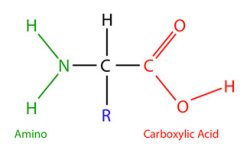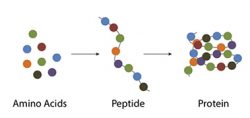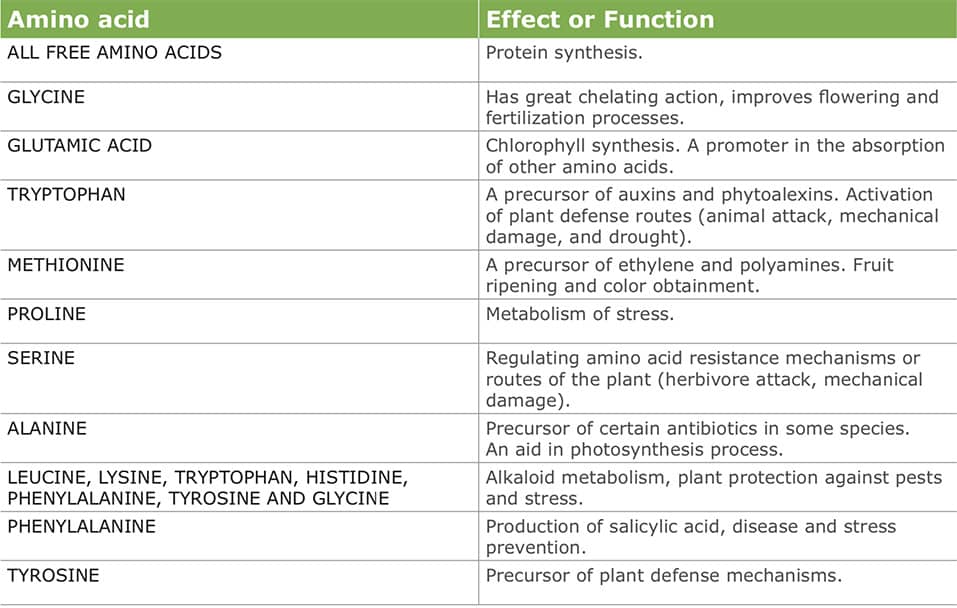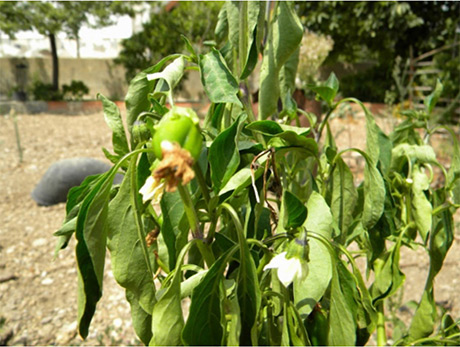Amino acids are basic units for protein biosynthesis, other than being precursors of other molecules which are essential for plant metabolism, such as hormones, coenzymes, nucleotides and polymers of the cell wall.

These are organic molecules composed of carbon, hydrogen, oxygen, and nitrogen. Methionine and cysteine also contain sulfur. Its name derives from the functional groups which contain: a basic amino group H(NH2), and an acid carboxyl group (COOH) attached to a carbon chain.
Img 1. Basic structure of amino acids.
Twenty amino acids have been identified as protein developers. The quantified ratio of each amino acid is called “amino gram”. Each amino acid (except for glycine) can have two isomeric forms, due to the possibility of developing two different enantiomers around the central carbon atom. Conventionally, these are called forms L – and HD – analogical to left-hanOd and right hand settings.

The amino acids can be freely existing in vegetable tissue or being part of peptides and proteins; that is why its availability in the plant is very important as they are involved in multiple reactions of plants and are related to optimal growth and plant development.
Img 2. An example of protein production
Below is a summary of the main effects of amino acids in plants:

Foliar application of amino acids allows to directly provide the plant with the basic raw materials for protein development. Amino acids are easily absorbed, as the plant recognizes them as substances of the cell metabolism. Under optimal conditions and adequate potassium levels, free amino acids are quickly turned into proteins.
With the direct provision of L-amino acids, we save the plant the additional energy expense involved in the synthesis of amino acids, because the plant does not need to perform the different biochemical transformations of inorganic nitrogen to amino acids.
Amino acids are used at critical stages in crop development, as well as in abiotic stress situations.
Weather conditions influencing fruit mooring are: low or high temperatures, dry winds, clouding and rains. In addition, endogenous factors such as the amount of nutritional reserves and hormone content in plants affect fruit mooring as well. As the fruit develops, competition phenomena begin to appear between fruits and the vegetable parts due to the photoassimilates, and this action can induce fruit fall. If there is no balance between these factors mentioned, the plant may therefore undergo an imbalance, which is reflected in both physical and economic matters in the final crop yield.

Img 3. A stressed crop manifests low yield.
Several scientific trials show that using amino acids significantly enhances crop nutrition. Since 1984, the work performed by Dr. Smykov concludes that the addition of proline promotes the increase of the fruit set of diverse apple tree varieties.
Dr. Rigini concluded that spraying olive trees with arginine increases the fruit set of olives without affecting the abscission of young fruits; considering that, the treatment should be performed in full bloom or at the beginning of the fall of petals.
The benefit of amino acid application in crops is a significant energy saving in the production of the same; this energy saving can be reflected in plant vigor and tolerance improvement in stress situations, by significantly reducing the damage in performance and in crop quality caused by stress situations.
Besides the energy saving, amino acid application accelerates the tolerant response of crops to abiotic stress, reducing performance losses caused by stress in them. Amino acid applications to crops have responses which can be noticed rapidly, achieving more vigorous crops with an improved response to adverse weather conditions.

